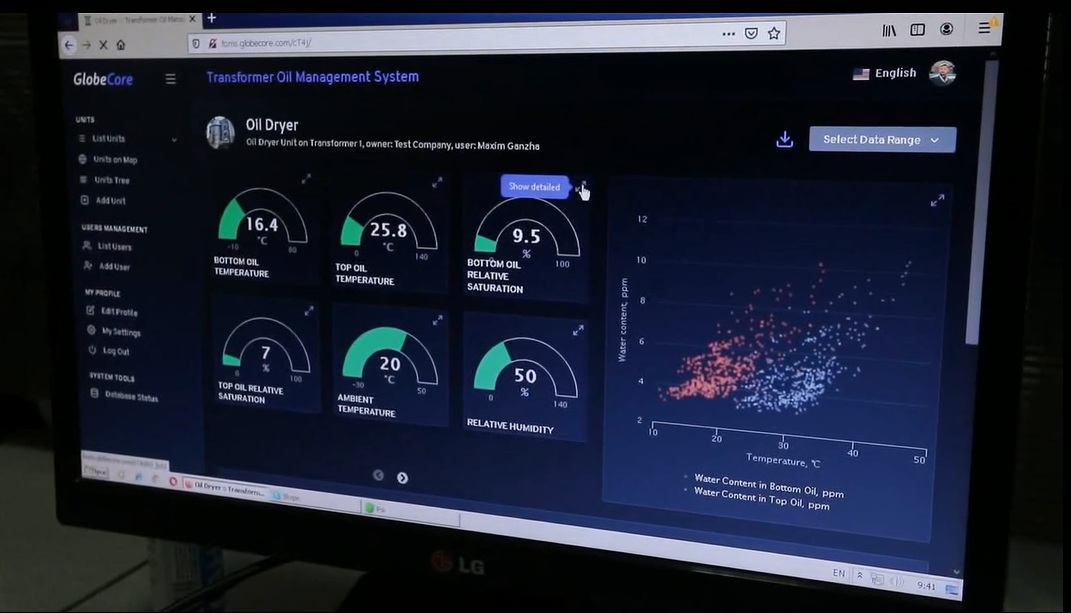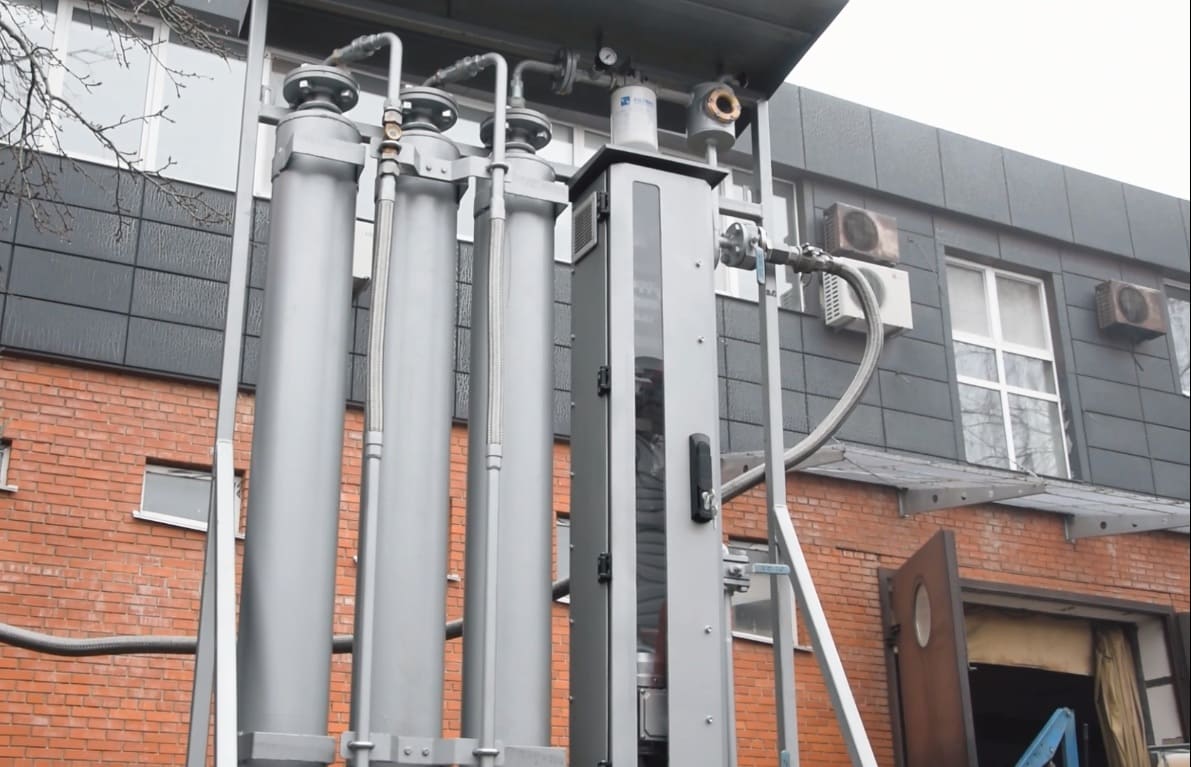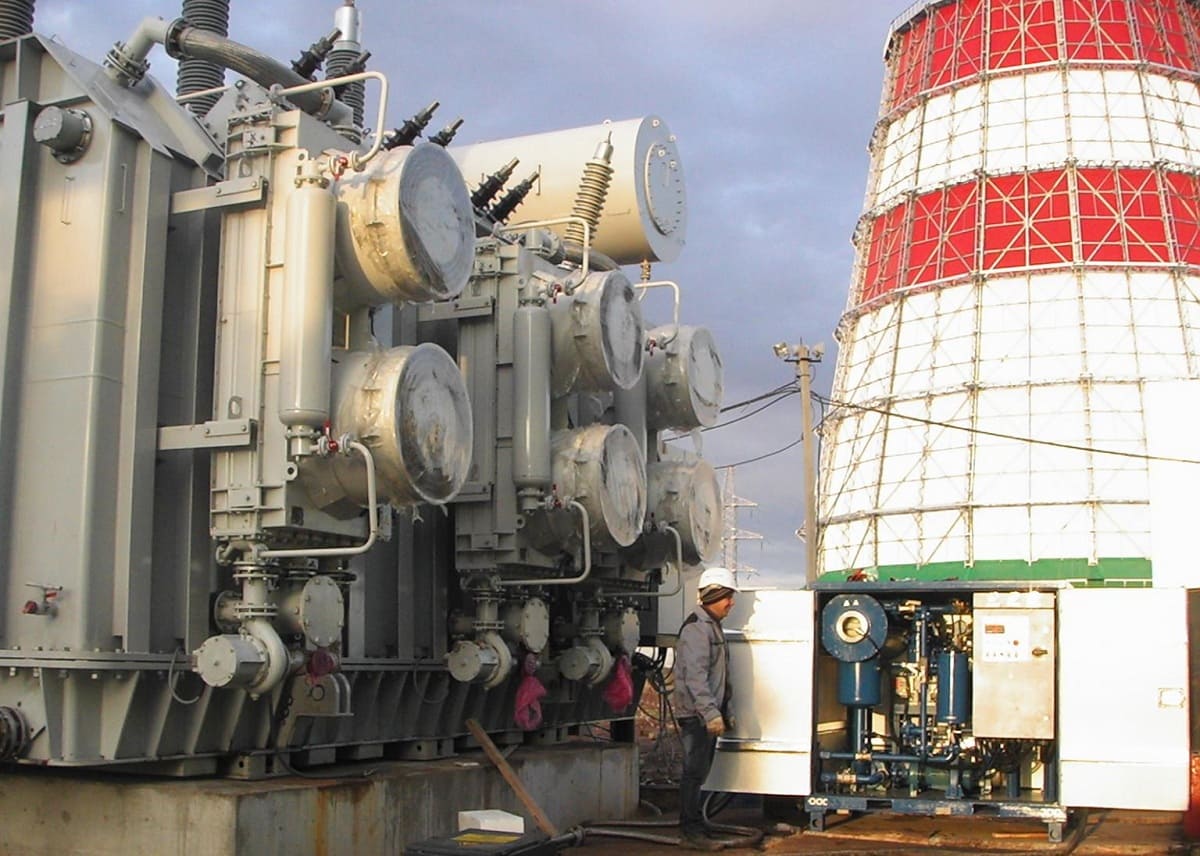In this article, we will discuss special aspects of transformer diagnostic evaluation and focus on online transformer monitoring systems. The presence of such systems makes transformer servicing easier, more convenient, and cost-effective.
Approaches to classification of transformer status monitoring methods
There exist various approaches to classification of transformer status monitoring methods which are determined by the attribute underlying the classification. We highlight direct and indirect, as well as offline and online diagnostic evaluation methods.
Direct methods are applied to the transformer component the status of which must be diagnosed. For example, in order to become aware of the windings insulation status, the insulation resistance is measured using a megohmmeter. Indirect diagnostic evaluation methods use intermediate components of a transformer, or an intermediate information medium. Insulating oil is typically used as an information medium. In this case, first, transformer oil diagnostic evaluation is performed, and next, a conclusion is made about the presence of certain defects in the transformer based on the results thereof.
Online diagnostic evaluation methods are implemented using the instruments and devices connected directly to the transformer, “reading” the information, and transmitting it to the end user. Offline methods are implemented using the laboratory instruments that handle previously taken samples of insulating oil or other samples (paper insulation pieces, etc.).
Chromatographic analysis of transformer oil

There exist many techniques for interpretation of measurement and defect detection results which are implemented either by computation and analysis or by graphics. In the first case, the numerical ratios of different gas pairs are found, and a conclusion is made about the presence and type of defect depending on obtained values. The classic graphic technique is the Duval Triangle according to which a triangle is first constructed; next, it is divided into several sectors, and the type of defect is determined by the sector where the point plotted on the basis of measured gas concentrations gets in.
Chromatographic dissolved gas analysis is a powerful diagnostic evaluation technique, but implementing it requires special laboratory equipment that allows extracting gases from oil (analyzers).
Transformer oil monitoring based on results of laboratory analyses
In addition to the information function, oil performs two other system-forming functions in a transformer; these include removal of heat from heating parts and insulation of current-carrying elements. Therefore, it is also important to monitor the condition of oil. Laboratory methods are mostly used for that purpose.
First, oil samples are taken from the transformer; next, the samples are delivered to the laboratory where they are tested using special instruments. In order to understand the condition of oil, its breakdown voltage, dielectric loss tangent, acid number, interfacial tension, moisture and mechanical impurities content, color, and other parameters are determined.
The main disadvantage of laboratory methods is that results take long to come. In modern transformers, serious damage can develop in a matter of days or hours; therefore, after obtaining a laboratory analysis report, one can manage to perform the required transformer maintenance not in every instance. The principle of periodic sampling where analyses are carried out regardless of the condition of oil does not prove its worth either. Every owner is interested in cheap transformer maintenance and cost reduction for transformer oil analysis; thus, it is advisable to pay attention to online diagnostic evaluation systems.
TOR-5 transformer monitoring systems

- more complete insights into the transformer status which are difficult to get by means of laboratory tests only;
- taking samples is not required which reduces the manual labor input;
- saving money on orders for analyses placed with private laboratories.
GlobeCore has developed TOR-5 system for online monitoring of power transformer status. It is used to carry out transformer monitoring for special-purpose (traction, mine, marine, electric furnace, wind turbine, and other) transformers, as well as for transformers with a long service life.
GlobeCore TOR-5 system performs the following functions:
- Online transformer oil analysis.
- Convenient informing of users about the current transformer status via a web-interface.
- Transformer oil drying when the moisture content exceeds the specified limits.
TOR-5 system remains near the transformer and is connected thereto using pipelines. All important components of the system, including sensors, are located inside the housing; the IP rating of the housing allows operating the transformer online monitoring equipment outdoors.
Transformer parameters monitored by TOR-5 system
Using sensors, TOR-5 system measures the following parameters once a minute:
- temperature of transformer top and bottom oil;
- active water in transformer top and bottom oil;
- relative humidity of transformer top and bottom oil;
- ambient air temperature;
- relative humidity of ambient air.
Apparently, measurement of humidity is accepted as a baseline parameter. It is associated with the fact that wet transformer prevention is one of the main tasks in servicing.
Parameters evaluated by TOR-5 system
All measured data are transmitted via the Internet to a cloud server where additional parameters are calculated:
- water content in transformer top and bottom oil;
- water content in solid insulation at transformer top and bottom;
- breakdown voltage of oil;
- oil quality index.
Thus, the quantity of information parameters available in TOR-5 system is greater than the quantity of installed sensors due to the application of calculation algorithms.
The oil quality index is a comprehensive indicator that characterizes the overall condition of transformer oil. This indicator correlates well with the degree of oil aging; therefore, it can be deemed as an alternative to online measurement of acidity. The oil quality index ranges from zero to one. A range value of 0.8–1 corresponds to a good condition of transformer oil, and a range value of 0–0.2 corresponds to bad, aged oil.
Features of TOR-5 system web interface
All the measurement and calculation results are displayed on a web page which can be accessed with a password, and the number of users with access is unlimited. The system is additionally protected against hacking by encryption, so the receipt of information by third parties is prevented.
Data visualization has been made user-friendly: the web page displays a list of substations and transformers of each substation. The program also includes display of transformers on the map with representation of measurements and calculations in the form of graphs and charts. Having chosen an object, one can get complete information about the condition of oil for the entire period after installing TOR-5 system near the transformer, or for a selected period of time.
Even while on vacation, the director of the electric power company or an employee of the service subdivision can log in the system from any workplace and get to know the transformer fleet status without awaiting the laboratory result and leaving for the equipment operation site. Due to ongoing data acquisition, the transformer status change dynamics can be assessed which makes TOR-5 system more informative compared to periodic laboratory analyses. And even if there is no Internet connection for some reason, not a single measurement will be lost: all the data are saved, and when the connection is restored, they are transmitted to the server in batch mode.

Transformer online drying by means of TOR-5 system
When the moisture content of oil reaches the specified value, TOR-5 system automatically switches from diagnostic evaluation to oil processing mode.
Oil processing includes:
- filtration — a filter with the filtration fineness of 10 microns is installed;
- oil drying — the water is absorbed by a sorbent while the oil is sequentially pumped through adsorbers.
After the parameters are restored, TOR-5 unit automatically switches between oil processing and diagnostic evaluation modes.
Oil processing by pumping the oil through sorbent-filled adsorbers may be deemed as alternative transformer drying. In this case, oil is taken by TOR-5 system from the bottom point and returns dried to the transformer top point. Due to the fact that the transformer water constantly migrates from oil to paper insulation and the other way around, oil circulation through adsorbers allows removing the water not only from oil, but also from paper insulation. Thus, continuous transformer drying is achieved. TOR-5 system keeps a transformer dry throughout its service life.

Additional features — hydrogen stream gas analyzer
Unlike thermal vacuum drying, sorbent-based drying does not influence the dissolved gas composition and amount in oil. Therefore, sensors which are used to determine, for example, hydrogen content in oil can be optionally added to TOR-5 system.
Continuous online gas analysis will allow expanding the capabilities of TOR-5 system and make the diagnostic evaluation of transformer status more complete and informative.
Benefits of using TOR-5 system
- extended service life of transformers due to continuous monitoring of important parameters and timely processing of oil online;
- increased timing between maintenance services for transformers due to periodic processing of oil in automatic mode;
- saved money due to ceasing to use laboratory analyses;
- reduced expenses for insurance of transformers;
- decreased number of qualified staff involved;
- environmental conservation due to preventing the transformer emergencies associated with splashing of insulating oil.
If you have any questions regarding the use and operation of TOR-5 system, please send them to our e-mail detailed in the appropriate website section.

